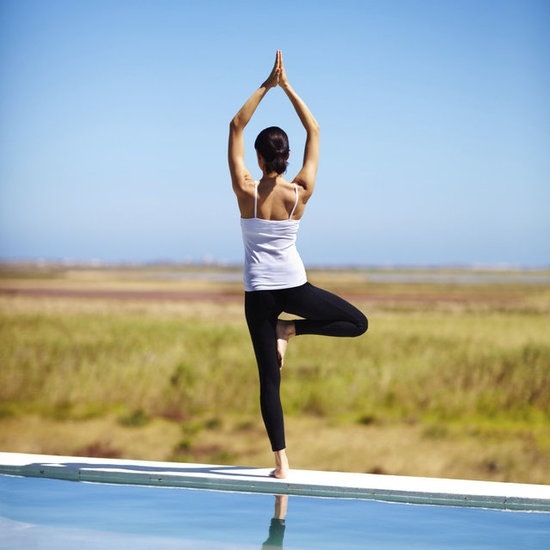Orthotics

Good digestion:
Because posture begins with your core, it directly affects digestion. Poor posture can contribute to acid reflux by weakening your esophagus. Siting in a hunched position or lying down directly after a meal places stress on the stomach that promotes heartburn and indigestion. If you’re looking to ease digestion and practice better posture after a meal, watch your posture and exercise regularly.
Better breathing:
Deep breathing can become second nature, not just a yoga luxury. Rather than compressing your abdomen and chest, prevent shallow chest breathing by standing up straight and sitting tall at your desk. Good posture allows the front of your body to open and your diaphragm to work at its best. Still in doubt? Test it for yourself — right now — and notice the difference.
Tightens your core:
Poor posture may be the one thing preventing you from getting that six-pack. When you slouch, you start to reverse the benefits all those planks. By practicing better posture, you’ll keep your entire core engaged, even when you’re not at the gym. Sitting on an exercise ball at work is a great way to enforce good posture and tighten your core while on the job.
Strengthens back muscles, reducing pain:
Slouching at your desk or while standing puts extra strain on the muscles that support your spine, ultimately leading to other aches and pains as well. Improving your posture by unlearning all your bad postural habits and standing with your feet hip-distance apart can be the key to relieving chronic pain.
Looking slimmer:
Ladies, it’s true, bad posture makes you look heavier than you are! Standing up straight can make you look five pounds slimmer without dieting. Good posture will help you stand tall (and rock your bikini) with confidence.

Achilles Tendonitis is a condition where the Achilles Tendon, at or near its insertion to the posterior aspect of the calcaneus, becomes inflamed and causes pain.
Patients will experience severe aching or burning pain in the back of the heel. This pain typically increases with passive dorsiflexion and resisted plantarflexion, such as rising up onto the toes.
Injury to this pivotal tendon is caused by minor rips and tears that can occur from imbalances in the feet, or sports activity.
In addition to rest and ice, recovery and prevention can be supported by:
Proper footwear
Footwear with adequate support and a fit-depth counter will help protect and stabilize the feet during mobility.
Stretching
Stretching is beneficial for restoring the natural range of motion in the feet.
Footmaxx Orthotics
Since over-pronation is one of the main causes of Achilles Tendonitis, the patient should be fitted with Footmaxx semi-rigid orthotics to control excess motion of the subtalar joint and maintain proper alignment.
Call for a free assessment now 604-270-1007.

Posterior Tibial Tendon Disorder
Those who suffer from Posterior Tibial Tendon Disorder (PTTD) can experience pain, inflammation, and collapsing of the medial arches.
When stretched from its normal state, the Posterior Tibial Tendon (PTT) lacks the ability to support and stabilize the medial arch. Strenuous pressure on this tendon without continual support will increase the chances of it being completely torn.
Most circumstances of PTTD can effectively be treated and prevented with orthotics and custom foot orthoses. Very few cases are so severe that surgical intervention is required.
In order to support this vulnerable tendon, an orthotic should be rigid and wide enough to prevent further collapse of the tendon. Orthotic intervention can have an immense effect in the prevention of PTTD.
Footmaxx offers a variety of orthotic specializations that can provide that support and take the pressure off of the weak tendon. An example would be an orthotic that offers a wide medial flange that can prevent further strain on the tendon by supporting the medial arch.
Prevention includes wearing orthotics and proper footwear. Patients should wear shoes that offer medial arch support with a firm heel counter, especially during rigorous activity. Wearing proper shoes and custom orthotics to prevent and treat this frequent injury is a proactive way to avoid surgery and long-term instability.
Call Richmond Chiropractic Centre to schedule a free gait analysis. 604-270-1007

Metatarsalgia
Burning pain in the forefoot is a common symptom of metatarsalgia. Many patients will describe the feeling of having a pebble or a marble stuck in their shoe.
Causes can be from an increase in activity, ill-fitted footwear such as high heels, or from the emergence of another foot ailment, such as a bunion.
Treatment options for metatarsalgia
• Footmaxx™ orthotics should be worn to correct abnormal pronation and redistribute the weight more evenly along the plantar surface.
Alternate footwear frequently
• Tight-fitting footwear can cause abnormal gait and should be worn in moderation. It is important to alternate shoes for work, social life, and exercise.
Take a break
• It is important to rehabilitate the injured area. Rest often and apply ice to reduce soreness and swelling.
• Try new exercise routines that apply less pressure on the feet, such as swimming or bike riding.
Check out the video from Footmaxx about their Metascan technology. We provide individually designed, custom Footmaxx orthotics to help you “walk the walk”.
http://www.youtube.com/watch?v=QiwDGle2QT0&feature=youtu.be
If you are interested in learning more, please call us at 604-270-1007 or email us at info@richmondchiro.com.








